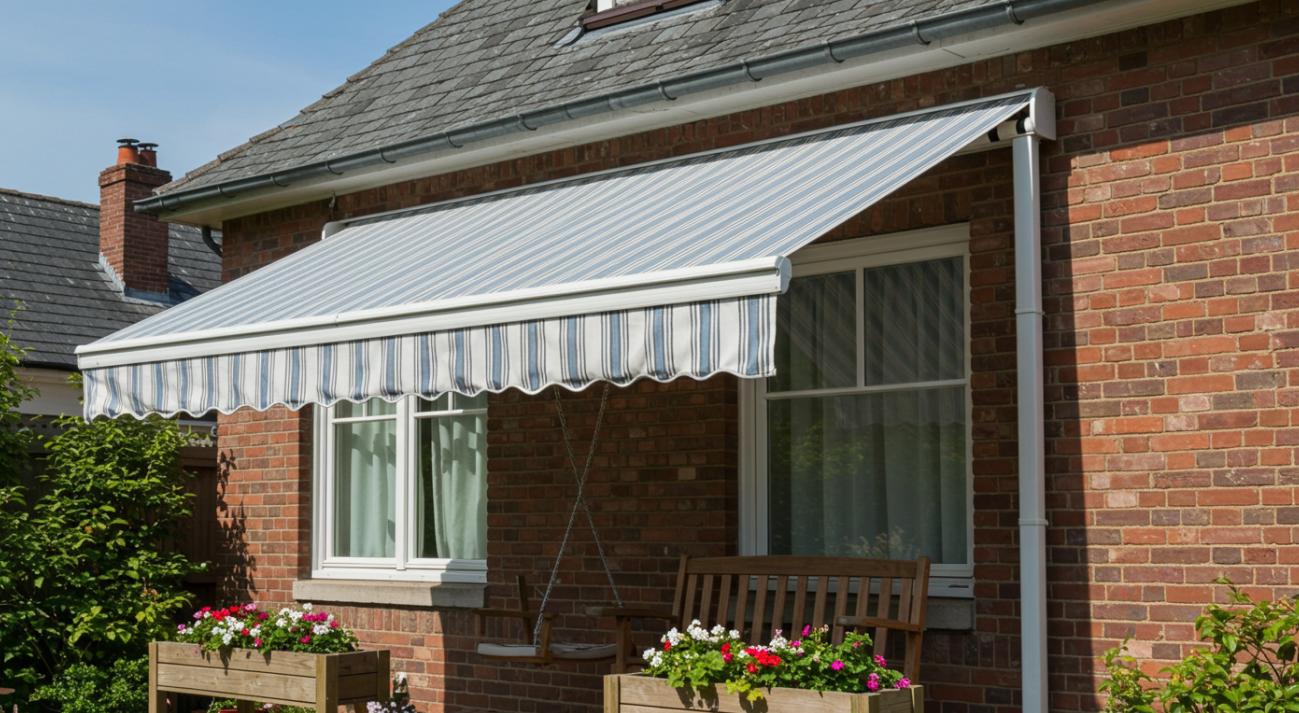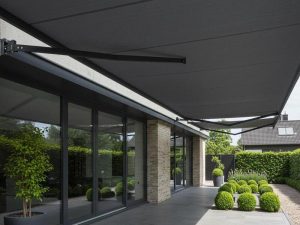
Understanding your needs
Before you choose an awning, clearly understand what you need. Knowing your specific requirements will make your decision easier.
Define the purpose
The first step is to clarify the purpose of your awning. Do you primarily seek shade for your patio, protection from rain, or both? Some awnings are exclusively designed for sun protection, while others are built to endure harsher weather conditions. Identifying your focus will aid in narrowing down your options significantly.
Measure the available space
Next, consider the dimensions of the area where you wish to install the awning. Take accurate measurements to avoid fitting issues later. A well-sized awning not only looks better but also performs its functions effectively. Make sure to account for vertical space and any overhead obstructions as well.
Consider your home’s aesthetics
Your awning should complement the overall style of your home. Whether your residence boasts a modern vibe or leans towards the traditional, align your awning choice with its architecture. Subtle elegance, bold statements, or classic looks can be achieved through careful selection.
Exploring different types of awnings
Now that you have a clear understanding of your needs, it’s time to explore the various types of awnings available. Each type has unique features designed to meet specific requirements.
Retractable awnings
Retractable awnings provide the flexibility to extend or retract based on changing weather conditions. This versatility is ideal for homeowners who wish to manage sunlight exposure throughout the day. Imagine enjoying a lazy afternoon under your awning only to retract it for stargazing at night!
Fixed awnings
If you’re looking for a long-lasting solution, consider fixed awnings. Their permanence offers consistent coverage and is best suited for areas that receive ample sunlight. They become a seamless part of your home structure, providing reliable shelter and unwavering style.
Freestanding awnings
Freestanding awnings deliver the ultimate freedom concerning placement. These structures can be positioned anywhere in your outdoor space. Whether you wish to create a cozy nook for relaxation or a gathering place for friends, a freestanding awning proves to be a practical choice.
Choosing materials and fabrics
The choice of materials and fabrics significantly impacts your awning’s durability and appearance. Let’s dig deeper into what’s available.

Frame materials
Frames can be constructed from various materials, including aluminum, steel, or wood. Each comes with its own benefits. Aluminum awnings, for instance, are lightweight yet robust, making them easier to install than some alternatives.
Weather-resistant fabrics
Focus on selecting fabrics that resist fading and endure extreme weather conditions. Canvas is a classic, providing excellent sun protection, while acrylic options are known for their fade resistance and durability. Vinyl awnings withstand moisture better, ensuring that rain doesn’t dampen your outdoor areas.
Color and design considerations
Choosing the right color and design is a fun part of the process. The aesthetic impact of your awning can either enhance or detract from your outdoor space.
Harmony with your facade
Select colors and patterns that complement your home’s exterior. For instance, warm-toned houses benefit from contrasting yet harmonious colors to create visual interest and enhance curb appeal.![]()
Personal touches with patterns
Add character by experimenting with different patterns and stripes. These can enliven your awning and create a vibrant ambiance, but ensure the design complements rather than overwhelms your space. The key is balance.
Functionality features
Modern awnings come equipped with features that boost their functionality, making them even more appealing to homeowners.
Motorized awnings
Motorized options offer convenience, allowing you to adjust the awning with the push of a button. This is particularly advantageous for larger models that might be cumbersome to handle manually.
Smart sensors and timers
Some advanced models come with built-in sensors that retract the awning during high winds and extend it when the sun shines brightly. Timers can help automate this process, ensuring that your space remains comfortably shaded throughout the day.
Budgeting and installation
Once you’ve identified your ideal awning, the next step is to consider your budget and how it will be installed.
Establishing a budget
Awnings come in various price ranges. Keep in mind that while a cheaper product might seem enticing initially, investing in a high-quality awning can lead to long-term savings on repair and replacement.
Professional installation vs. DIY
Some homeowners opt for DIY installation, but complexities associated with larger or more intricate awnings might require professional assistance. Although the intervention of a professional increases the initial cost, it guarantees safety and correct installation.
To preserve the quality of your awning over time, regular maintenance is essential. Ensure to clean it regularly, as buildup of dirt and debris can lead to wear and tear. Choose a gentle cleaning solution based on the material to prevent damage.
When winter approaches, consider retracting or removing your awning to protect it from harsh weather. This extends the life of the fabric and frame, safeguarding your investment.
For more information on choosing the right awning for your shop space, consult this article.









